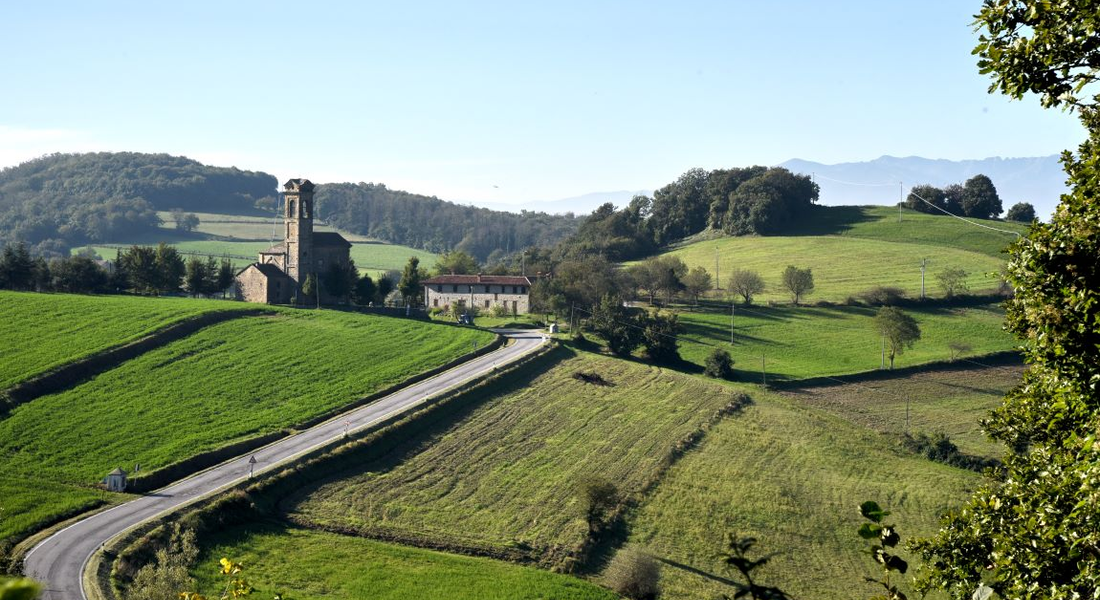Go past the town along the paved road and then head left at the first (marked) crossroads. This road will soon turn to unpaved and head to the right. Continue uphill into the woods a bit further and then come out into the open onto the watershed. The breeze coming in from the sea (that locals actually call in Piedmont dialect “marin”), will rustle through your hair and fill your nostrils with Mediterranean fragrances.
One thing Niella shares with the other villages on the right-hand side of the valley (with the notable exception of Cravanzana) is the destruction of its castle in the 17th century. Despite this loss, the village retains a number of important signs of its medieval past, which give you an idea of the fact that the town was armed by the Del Carretto Family to clamp down on the valley, together with Bossolasco on the opposite side, in order to control the San Benedetto passage. One such sign is its squat, stone tower with its hut-like roof, which may have been, given its lack of height, more a part of the castle’s fortification than an actual watchtower. Then there is the medieval archway known as the “Arco dei Francesi” (French Arch), which is very similar to the one in Novello with stone machicolations and pointed arch. The nickname comes from the fact that more than 10,000 of Napoleon’s soldiers came through this archway during his first Italian campaign as they headed to conquer Alba following victory in the Bormida Valley.
Niella also features the chapel of San Rocco with frescos in its apse that are protected behind glass (as the rest of the church no longer exists) and, of course, a stunning view over the Alta Valle Belbo as well as the Bormida Valley further off in the distance. Beyond Bossola Pass, there is the Murazzano Tower overlooking the Tanaro Valley, while to the south the Cadibona wall blocks the Ligurian sea from view.
As you leave in the direction of Mombarcaro, don’t miss the elegant Santuario della Madonna dei Monti, a spectacular sanctuary erected in the early 1700s, perhaps by the architect Francesco Gallo from Mondovì. In the somber Baroque style typical of the Piedmont region, this stone building features brick details and has just one nave. Within the sanctuary, recently restored frescos from the 15th century point to a possible replacement or expansion of a previous chapel. At an altitude of 860 metres (2,822 ft), it is the highest sanctuary in the Alba diocese, and it is here that, every year, a summer bonfire (like those described by Cesare Pavese in his novel “The Moon and the Bonfires”) is held to celebrate the Nativity of Mary (September 8th).
PLEASE NOTE: Responsibility for the maintenance and practicability of the various trails lies with the municipalities where the routes are located. The Tourist Board, therefore, cannot be held responsible for any inefficiencies, but is willingly available to collect your reports so that they can be forwarded to the authorities concerned.


